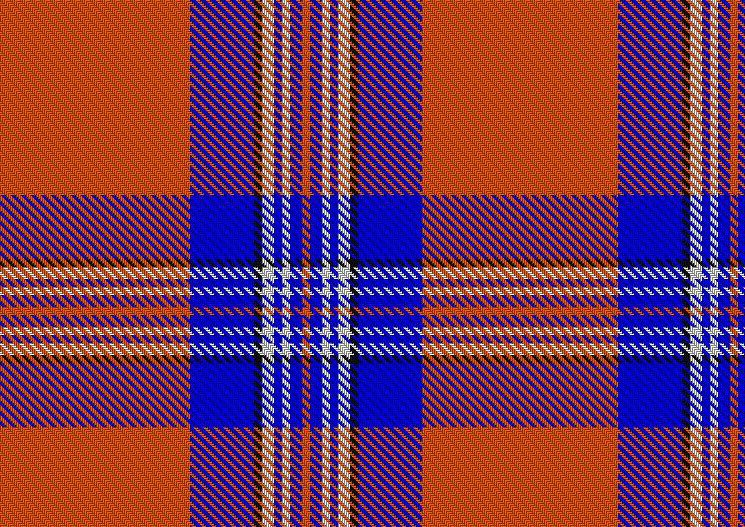As iconic as whisky and as famous as haggis, Scotland's other national drink, Irn-Bru, is widely enjoyed not just in the land of its birth but also across the globe.
Synonymous with Scottish culture, most Scots claim they couldn't live without it - while others claim it is the best hangover cure around.
But how much do you really know about Irn-Bru? Here are 17 facts you (probably) didn't know:

It wasn't always called Irn-Bru. Picture: TSPL
The name for the drink was originally supposed to be Iron Brew, but proposed branding laws forced Barr's, in July 1946, to alter the name with the stipulation that brand names should be ‘literally true’, as the soft drink is not actually brewed.
The new 'Irn-Bru' trademark was first registered on Thursday 18th July 1946.
Irn-Bru was born and the rest they say, is history.

A time line of Barr's Irn-Bru designs starting in 1901. Picture: Contributed
That's a lot of Irn-Bru!
(Bonus fact: The first ever Irn-Bru cans were introduced across the range in 1974.)
In the early days of Irn-Bru, a long-running advertising campaign was undertaken in the form of ‘The Adventures of Ba-Bru and Sandy’ comic, lasting from the 1930s to the early 1970s.
Ba-Bru was inspired by the character of ‘Sabu’ in Rudyard Kipling’s book ‘Sabu The Elephant Boy’.
Ba-Bru and Sandy introduced generations of Scots to Barr’s Irn Bru and were the longest running advertising cartoon characters in history.
Along with the comic, a neon sign featuring Ba-Bru stood outside Glasgow Central Station for many years, eventually being removed in the late 1970s.
Known for their smart and often hilarious adverts both on TV and on billboards, sometimes their marketing has pushed the boat out a little too far.
A Irn-Bru poster which featured a cow and the slogan "When I'm a burger I want to be washed down with Irn-Bru" attracted a record 700 complaints, while family values campaigners were outraged when an advert showed a young women in a bikini holding a can and saying: "I never knew four-and-a-half-inches could give so much pleasure."
They also attacked an ad which featured a newborn chick and the slogan: "There is nothing better than Irn- Bru when you've just been laid."

Picture: Barr's
In the past, the Barr horses were nearly as famous as the Barr products they used to haul on the flat-top lorries piled high with crates.
Huge and very strong, the Clydesdale horses were able to carry around 60 to 70 dozen bottles which weighed about three tons.
The`fleet' was a common sight around the region, with many of the animals going on to become famous in their own right, and the giant Clydesdale Carnera (named after boxing champion Primo Carnera) becoming the most famous of all.
Said to weigh a ton and considered to be the largest working horse in the world at the time, Robert Barr bought him from a Perth farmer in 1930.
He stood 19 hands 1 and a half inches high (6ft 6ins at the shoulder). Loved by the public he came to a tragic end in January 1937 and literally "died in harness" after slipping on the frost-bound road at the Cow Wynd in Falkirk.

Graham Barr raises a glass beside a cake to celebrate the 150th anniversary of the Irn-Bru company in Glasgow in August 1980. Picture: TSPL
Irn-Bru had dominated the Scottish market for over 100 years and although Coca-Cola has made inroads, it still sits a close second behind its Scottish rival.
Irn-Bru is also the third top-selling soft drink in the UK overall, with Pepsi and Coca-Cola occupying the top two spots.
The tagline ‘Made in Scotland from girders’ was used to sell Irn-Bru for several years in the 1980s.
Though the ‘girders’ were often thought to be a reference to the ‘rust’ colour of the drink, Irn Bru does have 0.002 per cent ammonium ferric citrate listed among its ingredients - a food additive containing iron hydroxide.
In 2007 the ‘Made in Scotland from Girders’ campaign was awarded ‘Best Advertising Slogan of the Last 21 Years’ at the Scottish Advertising Awards.
Only three people in the whole world reportedly know the recipe for making Irn-Bru: Former company chairman Robin Barr; his daughter Julie Barr (the firm’s Company Secretary and Legal Affairs Manager) and one other A.G. Barr board director, whose identity remains confidential.

Robin Barr. Picture: TSPL
Some claim the trio will never travel on the same plane, just in case.

Picture: Irn-Bru
Irn-Bru is manufactured under licence in five factories in Russia alone by Barr's partner, the Moscow Brewing Company.
It is still exported to Spain, the Netherlands, Germany, Gibraltar, Belgium, Poland, Malta, Greece, Cyprus and parts of Africa, North America, Asia, the Middle East and Australasia.
Elvis Costello references Irn-Bru in his song ‘The St Stephen’s Day Murders’, with the lyrics: ‘There’ll be laughter and tears over Tia Marias, mixed up with that drink made from girders.’
Irn-Bru is also known for its apparently magical restorative powers as a hangover cure and this prompted Billy Connolly to write and release an ode dedicated to Mr and Mrs Barr “for saving my life on so many Sunday mornings” in his 1975 album 'Cop Yer Whack For This'.
In the National Museum of Scotland’s range of exhibits selected by celebrities, Sir Sean Connery chose a crate of Irn-Bru.
Benny Lynch, a Glaswegian, who became World Flyweight Champion in 1935 also endorsed drinking Irn-Bru in his heyday.

The Glass bottle still comes out on top. Picture: Irn-Bru
Voting by fans on a poll on the Irn-Bru website shows a particular favouritism for the glass vessel, with 71 per cent voting in favour of the bottle and only 29 per cent voting in favour of the can - and this is despite the fact you can no longer cash in the 'glass cheques'.

The Irn Bru tartan Picture: National Records of Scotland
Designed in 1969 as the Barr tartan, by Howe design, it was updated in 1996/97 and redesigned by Kinloch Anderson with the name changed to Irn-Bru tartan.
It was registered with the Scottish Tartans Society on 12th September 1997 and the colours are based on the iconic brand's packaging.
This tartan was different from the generic tartan used by the brand on their English adverts in 1969.
The 'Snowman' ad was inspired by Raymond Briggs classic 1982 animated film ‘The Snowman’ and puts a twist on the now famous soundtrack by Howard Blake with some typically Scottish humour employed to create new lyrics.
Regularly voted the best Scottish Christmas ad, Barr's now push the idea that "it's not Christmas time until you've seen the Irn-Bru Snowman ad".
In 2005, rumours circulated in the Scottish Muslim community that Irn Bru contained alcohol, meaning that many of them feared they would no longer be able to continue to drink the beloved soft drink.
AG Barr went on to confirm that Irn-Bru did indeed contain alcohol, but that it was such a small amount as to be virtually negligible, meaning everyone, including the Muslim community, could continue to enjoy Irn-Bru as it didn't go against the teachings of their religion.

IRONBREW bottle label from the New York-made fizzy drink, circa 1900. PIC: SWNS
Researcher David Leishman said evidence shows a drink called IRONBREW was first launched by a New York firm in 1889.
Though the company, which allowed Leishman access to its own records, have not denied the theory, a spokesperson for AG Barr did say: “There’s no doubt there have been Iron Brews in the past, but for us there is only one real IRN-BRU.”

Picture: Jordanhill School\Flickr
The strongman logo - known as the iconic “Highland athlete” - which features on the cans was originally portrayed by popular Highland Games athlete Adam Brown, with Scottish strongman Donald Dinnie also reportedly approached by Robert Barr to endorse the drinks in adverts.
Donald, according to the BBC proclaimed: "I can recommend BARR's IRN BRU to all who wish to aspire to athletic fame, signed Donald Dinnie, All-round Champion Athlete of the World."
In 1922, a Cambridge rower replaced Adam Brown on the original Iron Brew labels. In the picture used for inspiration his right hand had held an upright oar, but this was substituted by a glass of Iron Brew.
Designer Chris Mitchell went on to develop the stylised Strong man character brand icon which replaced the older label and is still in use today.

Portrait of Scottish singer, comic and actor Billy Connolly in Glasgow in March 1974.
Irn Bru has many famous fans, including Line of Duty's Martin Compston and US congresswoman Alexandria Ocasio-Cortez who was determined to try the drink when in Glasgow for COP26.
But it was Billy Connolly who penned an ode thanking Mr and Mrs Barr for ‘saving my life on so many Sunday mornings’ on his 1975 album Cop Yer Whack for This.
